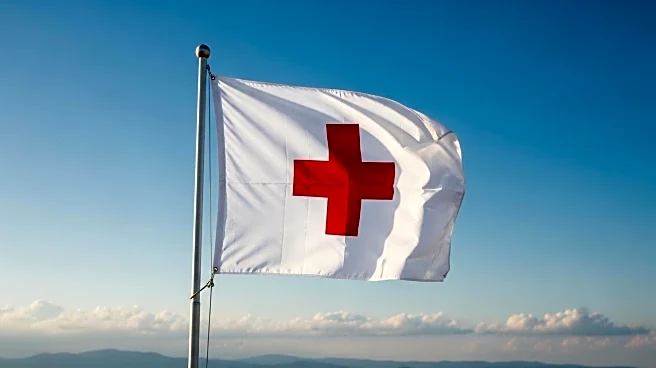What's Happening?
Following the signing of a peace deal concerning Gaza, Red Cross vehicles are stationed, awaiting permission from Israel to enter the region. The convoy includes empty aid trucks and two refrigerated trucks intended for the transfer of Palestinian bodies from Israel to Gaza. This development comes amid ongoing concerns and questions about the implementation and impact of the peace agreement. The situation remains tense as stakeholders assess the implications of the deal and the logistics involved in its execution.
Why It's Important?
The peace deal in Gaza is a significant diplomatic development with potential implications for regional stability. The involvement of the Red Cross highlights the humanitarian aspect of the agreement, emphasizing the need for aid and the respectful handling of casualties. The successful implementation of this deal could lead to improved relations and reduced hostilities in the region, affecting geopolitical dynamics and potentially easing tensions that have persisted for years. However, the lingering questions suggest that challenges remain, particularly in terms of trust and cooperation between the involved parties.
What's Next?
The next steps involve the logistical execution of the peace deal, including the entry of aid and the transfer of bodies. Stakeholders, including international organizations and governments, will likely monitor the situation closely to ensure compliance and address any emerging issues. The response from local populations and political leaders will be crucial in determining the deal's success and sustainability. Continued dialogue and negotiation may be necessary to resolve outstanding questions and ensure long-term peace.
Beyond the Headlines
The peace deal could have deeper implications for international diplomacy and humanitarian efforts in conflict zones. It may set a precedent for how similar situations are handled in the future, influencing global policies on conflict resolution and aid distribution. The ethical considerations surrounding the treatment of casualties and the provision of aid are critical components that could shape future humanitarian strategies.











